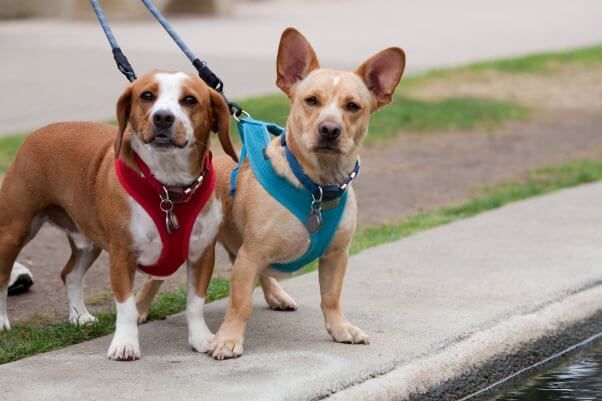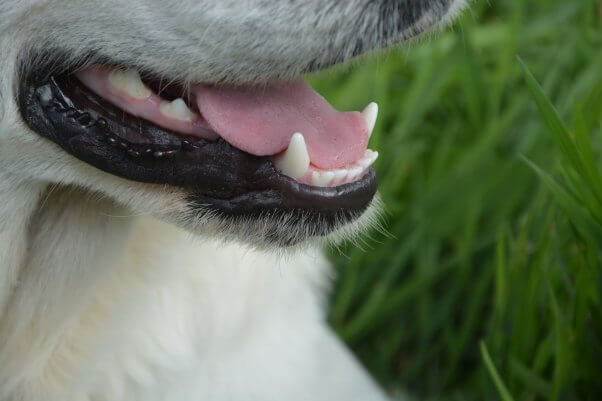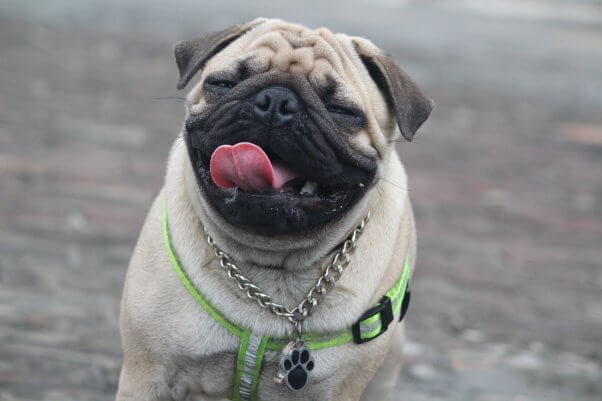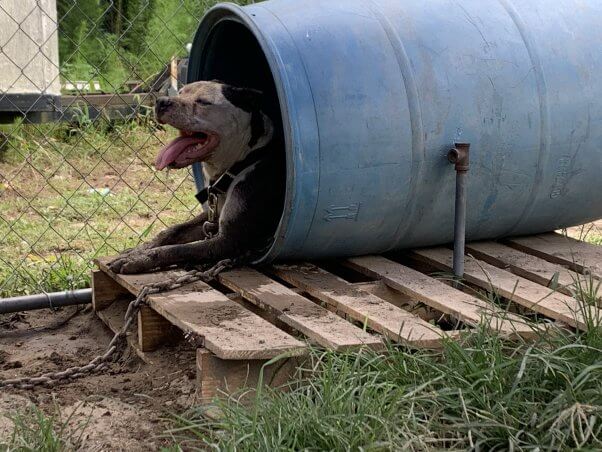Dogs Don’t Smile With Their Tongue Out: How to Know When It’s Too Hot for Spot
On a warm day, you might think it doesn’t feel too hot outside to take your canine companion for a midday walk, but if their tongue is out of their mouth and they’re breathing hard, they’re overheating and trying to cool down. Find out why dogs pant and how you can help keep yours safe in hot weather.

If Your Dog’s Tongue Is Out, They’re Hot: Why Do Dogs Pant?
Dogs pant to help cool themselves, which is analogous to why humans sweat when they exercise. Panting allows dogs to increase evaporation from their nose and lungs, which cools them down from the inside out.

Although panting is normal for dogs, when it’s hot outside, an open mouth with a lolling tongue, heavy panting or breathing, and excessive drooling are signs of heat-related distress. If your dog is showing these warning signs, you need to stop activity immediately and let them cool down.
Breathing-Impaired Breeds Suffer in Hot Weather
Breathing-impaired breeds like French bulldogs, Cavalier King Charles spaniels, and pugs have flat faces and abnormally small airways, which cause them difficulty regulating their body temperature since they can’t pant efficiently (among other health issues). This makes them twice as likely to suffer from heatstroke than other breeds.

Gasping, rasping, shortness of breath, and panting may be mistaken as “typical” for breathing-impaired breeds—but they are all signs of distress and can lead to heatstroke and death.
What Does Heatstroke in Dogs Look Like?
Signs of heatstroke include the following:
- Heavy panting
- Excessive drooling
- Vomiting
- Diarrhea
- Lethargy
- Difficulty walking
- Seizures
- Collapse
If you see a dog showing signs of heatstroke ensure that the animal is moved into the shade or an air-conditioned space, offer them water, and wet them down with room-temperature (not cold) water. If their owner isn’t around, call local authorities immediately.
What to Bring With You on Walks to Ensure Your Dog’s Safety in Hot Weather
Although dogs need several bathroom breaks during the day, when it’s hot out, a short walk may be better than a long one.

Here are some helpful tips when walking your companion in the heat:
- Always test the pavement with the palm of your hand before setting out—if it’s too hot for your hand to rest on the surface for several seconds, it’s also too hot for your dog’s paws.
- Opt for shady, grassy routes when possible.
- Carry a water bottle and a collapsable bowl with you.
- Walk early in the morning or late in the evening, when it’s cooler.
- Take frequent breaks.
- Never make dogs wear muzzles or halters that restrict their breathing.
- Opt for a lightweight fabric collar or a cooling vest.
- Walk—don’t run. Dogs will run to the point of collapse just to please you. At that point, it may be too late to save them.
Take Action: Be a Hero for ‘Backyard Dogs’
Bruce’s family left him outside during hot weather with no fresh water and limited shelter from the sun. Fortunately, PETA fieldworkers spotted him panting with his mouth wide open and overheating, and they gave him fresh water and added a tarp over his pen to create shade in order to help prevent heatstroke.

Please support PETA fieldworkers’ relentless mission to care for “backyard dogs” like Bruce with a generous donation. You can also advocate for tethering bans in your community, joining thousands of other caring individuals across the U.S., and work with elected representatives to help get ordinances passed that ban or restrict chaining. To get started, see what current legislation on tethering dogs exists in your community.
Dogs should never be left outside unattended, but when they’re outside and deprived of access to water, food, or shelter, the situation becomes an emergency—and local authorities should be contacted immediately. If they’re unresponsive, contact PETA for help. Anyone who leaves animals outside to suffer in severe weather may face criminal charges. Dogs’ well-being—even their lives—could depend on you.

